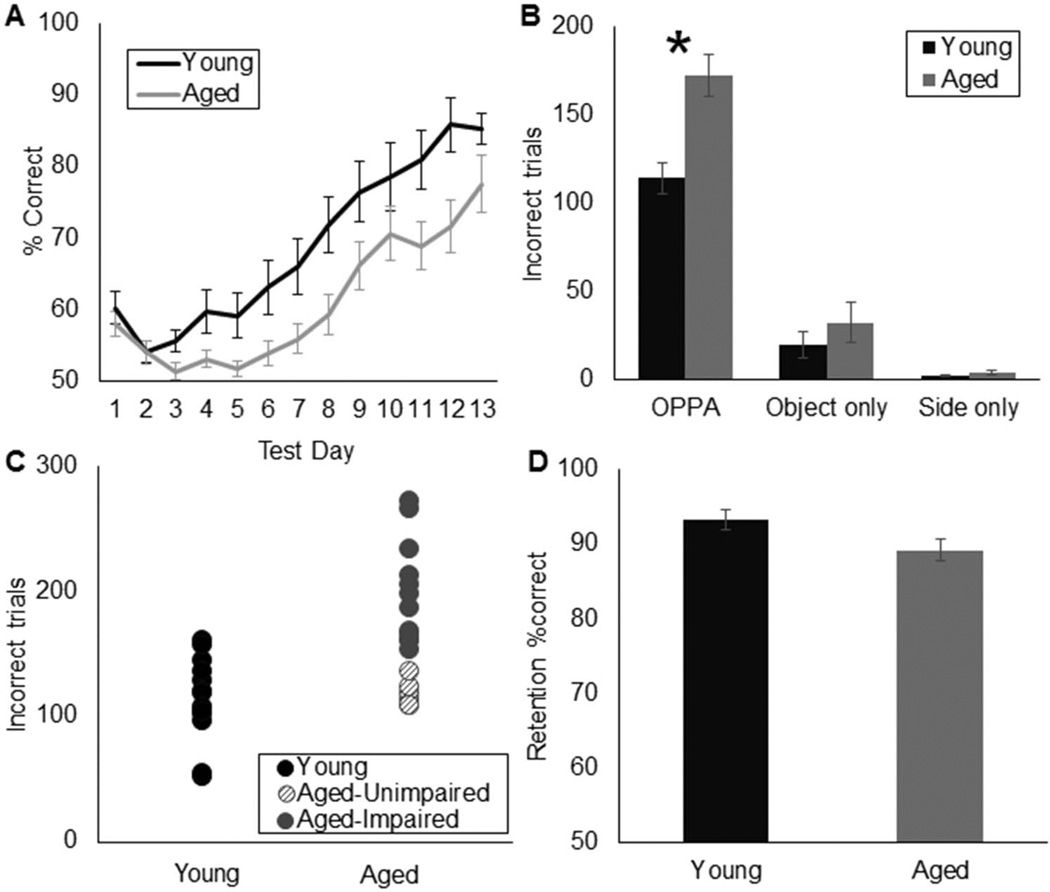Figure 3.
Object-place paired association (OPPA) task performance. (A) Percent of correct responses (Y-axis) on the OPPA task for each of the first 13 days of testing (X-axis) in young (black) and aged (gray) rats. (B) Mean number of incorrect trials made prior to reaching criterion performance (Y-axis) for young and aged rats on OPPA, object discrimination, and left-versus-right side discriminations tasks. Performance between age groups was significantly different for the OPPA task (p< .01*), but not for the control object (p= .89) or left-versus-right side (p= .46) discrimination conditions. (C) Individual performance of young and aged rats on the OPPA task. Four aged rats performed within the normative range of young animals (unimpaired; hashed circles). (D) Percent of correct responses (Y-axis) on the 48-hr delay OPPA retention test was not significantly different between age groups (p= .06; X-axis). Error bars show +/−1 standard error of the mean.

